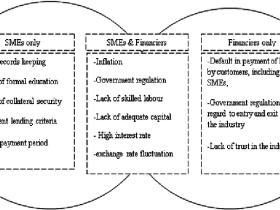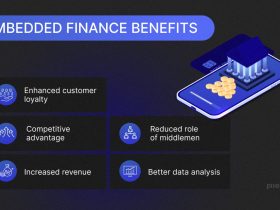In a survey of 1,284 executives, 85% of senior executives noted an explosive increase in organizational change projects over the past five years. The failure of 72 percent of transformations can be attributed to inadequate management support for the change (33 percent) and employee resistance (39 percent)Source
Change management affects your most essential asset, your people! Organizations miscalculated its significance; especially when it comes to transforming employees’ behaviors and attitudes towards these changes.
People don’t resist change. They resist being changed!”– Peter Senge
Navigating Change: A Video Tutorial
Using a change management plan can only benefit you and your team, so it is recommended to use one whenever you propose a change project, no matter how big or small the organizational shift will be. If changes are submitted and implemented in an organized way, you may find it easier to make progress on your project.
When change projects are not efficiently documented or controlled, “scope creep” can take effect. This term refers to the uncontrolled growth in a project’s scope after it begins, often resulting in budgetary overspending and continual extensions of your project’s timeline. With a comprehensive change management plan, you can avoid scope creep to save time, alleviate stress, and reduce costs.
What is a Change Management Plan?
What works for one, doesn’t seem to work for others. Well, that’s how you cater to business management. That’s change management.
A change management plan is a document that outlines the strategy and procedures necessary for dealing with a new project or organizational change. It may simply explain procedures for feedback or suggestions on a given project, such as how to submit a change request or how those requests are assessed.
Change management plans serve as an anchor for teams while organizations implement change. Since change can sometimes take a long time to implement, having a document that your team can refer to can help everyone stay on track throughout a project’s life cycle. Change management plans can remind you why a change is necessary, who is responsible for supporting change processes, how progress is monitored, and what new training strategies will be used to enforce change.
Case Study
A successful change management initiative is the transformation of Microsoft under the leadership of CEO Satya Nadella. When Nadella took over as CEO in 2014, Microsoft was struggling to keep up with the changing technology landscape and facing declining revenues. To address these challenges, Nadella implemented a comprehensive change management strategy that included several key initiatives:
Embracing the Cloud: Nadella recognized the potential of cloud computing and shifted Microsoft’s focus from traditional software to cloud-based services. This involved a significant reorganization of the company and a new focus on building cloud-based products and services.
Developing a Growth Mindset: Nadella instilled a growth mindset throughout the organization, encouraging employees to take risks, learn from failure, and continuously improve.
Cultural Transformation: Nadella recognized the need to change Microsoft’s culture to become more collaborative, customer-focused, and inclusive. He launched several initiatives to promote diversity and inclusion and foster a culture of innovation.
Simplifying Processes: Nadella simplified Microsoft’s processes and reduced bureaucracy to make the company more agile and responsive to market changes.
The results of this change management initiative have been impressive. Microsoft’s revenues have grown significantly, and the company is now one of the leading providers of cloud-based services. The company’s culture has also improved, with higher levels of employee engagement and a greater focus on innovation. Additionally, Microsoft has become more customer-focused, delivering products and services that meet the evolving needs of its customers.
Catalytic Alignment for Efficiency through Change Management
Implementing change can lead to process improvements that enhance efficiency. When introducing new technologies or methodologies, organizations can reevaluate and optimize existing workflows. Simultaneously, the process of change presents an ideal moment to foster alignment between sales and marketing. By involving representatives from both teams in the change planning process, organizations can align their objectives, reducing resistance and creating a sense of shared ownership.
Here are some steps you can tackle to enhance efficiency and foster alignment between sales and marketing teams. This approach not only optimizes processes but also creates a more collaborative and forward-focused work environment.
- Assessment and Planning: Start by assessing your current processes and identifying areas that need improvement. Plan how the proposed changes will address these inefficiencies.
- Clear Communication: Communicate the need for change to your teams. Explain the reasons, benefits, and potential outcomes. Address any concerns or misconceptions upfront.
- Cross-Functional Teams: Create a diverse team that includes members from both sales and marketing. Their different perspectives can offer valuable insights and enhance alignment.
- Process Mapping: Map out your existing processes to visualize the current workflow. Identify bottlenecks, redundant steps, and areas for improvement.
- Technological Integration: Introduce new technologies or methodologies that can streamline processes. Ensure these changes are aligned with the overall objectives of both sales and marketing teams.
- Pilot Implementation: Before full-scale deployment, test the proposed changes in a controlled environment. Gather feedback from your cross-functional team to make necessary adjustments.
- Training and Support: Provide comprehensive training to all team members affected by the change. Offer ongoing support to address any challenges or questions that arise during the transition.
- Metrics and Measurement: Define key performance indicators (KPIs) that reflect the desired efficiency and alignment outcomes. Regularly measure and track these metrics to gauge the success of the changes.
- Feedback Loop: Establish a feedback loop that encourages team members to share their experiences and suggestions for improvement. Use this input to refine the processes further.
- Celebrate Success: Once the changes have been fully implemented and positive results are evident, celebrate the achievements with your teams. Recognize their efforts and acknowledge them.
Typically a change management plan should fulfil the following purposes – Provide a case for change, Facilitate communication, Manage resistance, Show progress, Manage implementation barriers, Provide reinforcement.
Employees and teams are usually resistant to change. They are unsure about what the future holds for their job roles and responsibilities. Fortunately, you can mitigate this 70% by creating a change management plan. An effective change management plan ensures that the employees are guided through the change journey and supports a smooth transition to change.
So, to sustain and constantly support your people in adapting to these organizational changes you need an effective change management plan at your disposal.
A successful change management plan will not only drive effective transformation in the organization but will also help you ease employees into new business horizons!
References
Rowland, D. (2020). Still Moving Field Guide: Change Vitality At Your Fingertips. John Wiley & Sons.
The Most Successful Approaches to Leading Organisational Change, Deborah Rowland, Michael Thorley, and Nicole Brauckmann, April 20, 2023
Changing Company Culture Requires a Movement, Not a Mandate, Bryan Walker and Sarah A. Soule, June 20, 2017
The Top 20 Business Transformations of the Last Decade, Scott D. Anthony, Alasdair Trotter, and Evan I. Schwartz, September 24, 2019
“You’ve Got to Set Your People Up to Succeed” ” An interview with Tim Simmons, chief product officer of Sam’s Club, and Steve Prokesch, From the Magazine (May–June 2023).








Leave a Reply